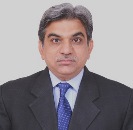
R.K. Vatsa
Bhabha Atomic Research Centre, India
Title: Photoionisation of nanoclusters : Collisional heating of confined electrons
Biography
Biography: R.K. Vatsa
Abstract
A nanocluster is a collection of atoms/molecules held together by weak van der Waals forces. These tiny balls of nanometer dimension are of great interest in physics and chemistry since the matter in nano form behaves differently than the bulk form. How do these nanoclusters behave as far as their interaction with a pulse of light is concerned, will be the subject matter of this presentation. It will be shown that nanoclusters, surprisingly, absorb large number of photons (hundreds to thousands per cluster) from the non-resonant optical field. Experimental results show that photoionisation of clusters using giga watt intensity laser pulses (l = 532 or 1064 nm) produces multiply charged atomic ions (as high as +8 state). The enormous amount of energy absorbed from laser pulse causes multiple ionisation of the constituent atoms/molecules. The presence of highly charged atomic ions being in close proximity leads to strong Coulombic repulsive forces and eventually the entire cluster undergoes violent disintegration known as Coulomb explosion. The end products of Coulomb explosion are multiply charged ions and energetic electrons as detected experimentally. The charge state of atomic ions and kinetic energy of electrons is higher in case of photoionisation by infrared photons as compared to UV-Vis photons. Further, a threshold cluster size is critical below which multiply charged atomic ions are not observed. The results have been explained based on the formation of nano-plasma by the leading edge of laser pulse (FWHM= 10 ns) which then interacts with the remaining portion of the pulse. The optical energy is coupled into the cluster by collisional heating of confined electrons inside the cluster. The large experimental data suggest that after initial multiphoton ionisation of atoms/molecules, secondary ionisation of cluster constituents is dominated by the energetic electron impact ionisation leading to multiple ionisation and concomitant effects.

